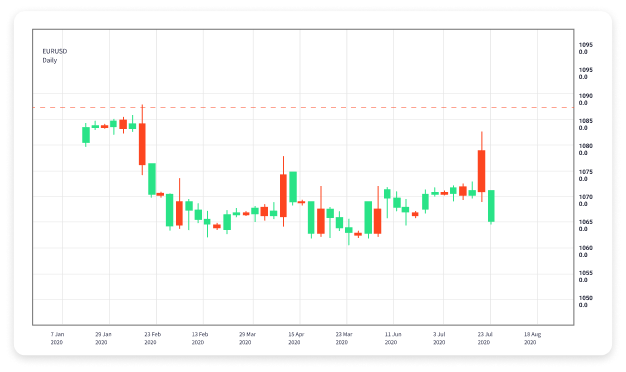Effective Forex Trading Strategies for Success 1870149860

Effective Forex Trading Strategies for Success
Forex trading can be an exciting yet challenging market for traders of all levels. Whether you are a novice looking to dip your toes or a seasoned trader seeking to refine your skills, adopting the right strategies is crucial for maximizing profits and minimizing risks. In this article, we’ll explore various forex trading strategies that can help you make informed trading decisions. Additionally, resources like forex trading strategies Trading Cambodia can provide valuable insights and tools to elevate your trading game.
Understanding Forex Trading
Forex, or foreign exchange, is the largest and most liquid financial market in the world. It allows traders to buy, sell, exchange, and speculate on currencies. Unlike stock trading, forex operates 24 hours a day, five days a week, giving traders the flexibility to trade at their convenience.
Successful trading in the forex market requires a solid understanding of market dynamics, currency pairs, and the factors influencing currency fluctuations. Traders often rely on various strategies to navigate market volatility and capitalize on price movements.
Types of Forex Trading Strategies
Forex trading strategies can be categorized into several types, each with its own approach and techniques. Here are some of the most popular strategies used by traders:
1. Day Trading
Day trading involves buying and selling currency pairs within the same trading day. Day traders aim to capitalize on short-term price movements and typically hold their positions for a few minutes to a few hours. This strategy requires a good understanding of technical analysis, as traders rely on charts and indicators to make quick decisions.

2. Swing Trading
Swing trading is a longer-term strategy that involves holding positions for several days to weeks. Swing traders focus on capturing significant price swings or “swings” in the market. This strategy is less time-intensive than day trading and allows traders to take advantage of medium-term trends. Fundamental analysis is often combined with technical analysis to identify potential trade setups.
3. Trend Following
Trend following is based on the idea that markets move in trends. Traders who employ this strategy will look for a currency pair that is trending upward or downward and will aim to trade in the direction of the trend. This approach relies on various indicators, such as moving averages and trend lines, to identify entry and exit points.
4. Scalping
Scalping is a high-frequency trading strategy that involves making numerous trades throughout the day to profit from small price movements. Scalpers rely on tight spreads and quick execution to make multiple small profits, often holding positions for just a few seconds to minutes. This strategy requires a solid understanding of market dynamics and quick decision-making skills.
5. Position Trading
Position trading is a long-term strategy that involves holding trades for weeks, months, or even years. Position traders typically focus on fundamental analysis to identify currencies that are undervalued or overvalued and take positions based on their long-term outlook. This strategy requires less frequent trading, making it less stressful compared to day trading or scalping.
Developing a Trading Plan

Regardless of the strategy you choose, developing a comprehensive trading plan is essential for success in forex trading. A trading plan helps you set clear goals, define your risk tolerance, and establish your entry and exit strategies. Key components of a successful trading plan include:
- Risk Management: Determine how much capital you are willing to risk on each trade and set stop-loss orders to limit potential losses.
- Trading Goals: Define your short-term and long-term trading goals to keep you focused and motivated.
- Market Analysis: Choose your preferred analysis method (technical, fundamental, or sentiment analysis) to evaluate potential trade setups.
- Record Keeping: Keep a trading journal to track your trades, analyze your performance, and learn from your experiences.
Utilizing Trading Tools and Resources
In addition to developing a trading plan, utilizing various trading tools and resources can enhance your trading performance. These tools may include:
- Trading Platforms: Choose a reliable trading platform that offers advanced charting tools, technical indicators, and a user-friendly interface.
- Economic Calendars: Stay informed about upcoming economic events, such as central bank announcements and economic data releases, that can impact currency prices.
- Online Courses and Webinars: Consider enrolling in trading courses or webinars that provide valuable insights and education on forex trading.
- Social Trading: Explore social trading platforms where you can follow and copy the trades of successful traders.
Key Takeaways
Forex trading can be a rewarding endeavor if approached with the right strategies and a disciplined mindset. Here are some key takeaways to remember:
- Understand different forex trading strategies and select the one that aligns with your trading style and objectives.
- Develop a comprehensive trading plan that includes risk management, trading goals, and performance analysis.
- Utilize trading tools and resources to stay informed and enhance your trading performance.
- Continuous learning and adaptation are vital to becoming a successful forex trader.
By implementing effective forex trading strategies and maintaining a disciplined approach, you can navigate the complexities of the forex market and work towards achieving your financial goals.
Categories
- ! Без рубрики
- .gruporcv.es
- .inhisetconsulting.com
- .rutadelamilpa.mx
- 1
- 1bet5
- 1GullyBet
- 1win Azərbaycan
- 1win-azerbaycan.az
- 1win-eg.net
- 1win-qeydiyyat.com
- 1winazerbaycan.org
- 1xbet
- 1xbet-uzbek.org
- 1xbet1
- 1xbet2
- 1xbet3
- 1xbet3231025
- 1xbet4
- 1xbet7
- 1xbetcasinoonline.com
- 1xslot.beregaevo.ru 36
- 2
- 20betschweiz.ch
- 22betofficial.com
- 22betschweiz.com
- 40-burning-hot-6-reels.gr
- 7Slots
- 9557gv0y4t
- a16z generative ai
- a16z generative ai 1
- adobe generative ai 1
- adobe generative ai 2
- ai chat bot python
- AI News
- almas-barbershop.de
- ancorallZ 2000
- ancorallZ 3000
- ancorallZ 900
- apolonio.escasinos-con-deposito-minimo-1-e
- apoteket4
- aquaservice-alicante.es
- armommy.com
- atlas-export.c
- azer1xbet
- bancorallZ 200
- bcg4
- bcgame1
- bcgame2
- bcgame3
- bcgame4
- bedpage
- beregaevo.ru 36
- berkeleycompassproject2
- berkeleycompassproject3
- bet1
- bet2
- bet3
- bet4
- betcasino5
- betting2
- betwinner1
- betwinner2
- betwinner3
- betwinner4
- bezhinternat.ru 4-8
- bildungsinstitut-reittherapie.de
- blog
- blog-1302
- blog-789
- bonanzagame
- bonanzareels
- Bookkeeping
- bou-sosh6.ru 4-8
- Casino
- casino1
- casino1-1
- casino10
- casino10-1
- casino11
- casino12
- casino13
- casino14
- casino15
- casino16
- casino17
- casino18
- casino18-1
- casino19
- casino2
- casino21
- casino22
- casino23
- casino24
- casino25
- casino26
- casino28
- casino29
- casino3
- casino30
- casino31
- casino4
- casino5
- casino6
- casino7
- casino8
- casino9
- casinobet1
- casinonon1
- casinos1
- cccituango.co 14000
- CH
- chat bot names 4
- CIB
- cienmilpeces.cl
- citybike-nordhorn.de
- cityoflondonmile1
- cityoflondonmile2
- cityoflondonmile3
- cityoflondonmile4
- coincasino
- comedychristmas.ch
- Cryptocurrency service
- cultura.cosenza
- daavdeev.ru 4-8
- Delivery Service 191
- dragon-money.art
- dxgamestudio
- dxgamestudio.com
- E-commerce
- EC
- elagentecine.cl
- English casino
- ERP
- esqueleto-explosivo
- exbroker1
- Excursions 611
- exness3
- exoneit.de
- f1point0.com
- Fairspin-casino
- fanarbeit.ch
- farma3
- farma4
- farmaci1
- farmacia
- farmacia1
- farmacia2
- feelyourbody.ru 120
- FinTech
- firstdepositbonus
- Forex Trading
- fysiotek.gr
- gameaviatorofficial.com
- games
- gizbo-sloty.ru
- gullybetofficial.com
- hospicehomejc.org
- hotlinecasino
- how does generative ai work
- i-ksiazka.pl
- icesailing.dk
- icestupa1
- icestupa10
- icestupa13
- icestupa2
- icestupa3
- icestupa4
- icestupa6
- icestupa7
- icestupa9
- IGAMING
- igryfort.ru 120
- imageloop.ru 20
- imperiaprazdnika.ru 10
- inasound.ru
- Indonesia Casino
- Indonesia Casino1
- Indonesia Casino2
- Indonsia Slot Gacor
- Indonsia Slot Gacor2
- IT Vacancies
- IT Вакансії
- IT Образование
- ivibetcasino.ch
- jaya9
- jaya91
- jaya92
- jaya9casino
- Jetton
- jetton 23.09
- Jetton KZ
- Jetton RU
- jetton ru 23.09
- komod-testfeld
- krotam.net
- linebet-uzbekistan.org
- linebetonline.org
- LotoClub1
- lucky-star1
- lucky-stars
- mandarin-oriental.ru
- marktkauf-shs.de
- mbousosh10.ru 4-8
- mega168bet.com
- meta-park.es
- metody-platnosci.pl
- minaevlive.ru
- montecryptoscasinos.com
- mostbet-azerbaycan-giris
- mostbet-oynash.org
- mostbetuzcasino.com
- mozzartbet
- nationalnurse.org
- News
- News - Copy (2)
- News - Copy (3)
- ninecasinoofficial.de
- Odoo
- ogrn-inn.ru 36
- okrogslovenije
- Omegle
- Omegle cc
- omitapparel
- Online Casino
- orthopaedic-partners.de
- pausenraum-freiburg.de
- pdrc
- Pin-Up
- Pin-Up AZ
- Pin-Up giriş
- Pin-Up indir
- Pin-Up oyunu
- Pin-Up UZ
- Pin-UP VCH
- Pin-Up yukle
- pin-up-casino-login
- Pinco
- Pinco TR
- Pinup Azərbaycan
- pocket1
- pocket2
- pocketoption2
- pocketoption3
- pocketoption4
- poland
- Post
- posts
- press
- primexbt1
- primexbt2
- primexbt3
- rabonaonline.de
- ready_text
- reviews
- rubds54.ru 36
- sansalvatrail.ch
- SBOBET1
- sch2kr.ru 4-8
- sharecroatia.hr
- slots
- Sober living
- Software development
- solonebbiolo.dk
- spinmachine
- spinmama-pl
- spinmamacasinos
- sputnikkey.ru
- stories
- styleconnection
- sugar-rush-1000.com.gr
- sugarrushslots
- sysgestionerp.cl
- t-store-smart.uz
- test
- Texs
- text
- themadisonmed.com
- thereoncewasacurl
- thereoncewasacurl.com
- thesaintaustere.com
- trader10
- trading11
- trading12
- trading13
- Trading3
- trading4
- trading5
- trading6
- trading7
- trading8
- traiding1
- traiding2
- Travelled
- trygge-norske-casino
- UK Casino
- ulola.hr
- Uncategorized
- updates
- vavada11.store
- vistetealamoda.es
- vohapress.uz
- volgambk.media 20
- vulkan-vegas
- wingsoverpittsburgh.com
- www.londonmarconisoccer.com x1
- xn----8sbn6aphbddbl0a.xn--p1ai 4-8
- yacivic.ru 20
- yetsetboutique
- zendesk vs. intercom
- zurkastanie-marl.de
- Текста
- Финтех
- Форекс обучение